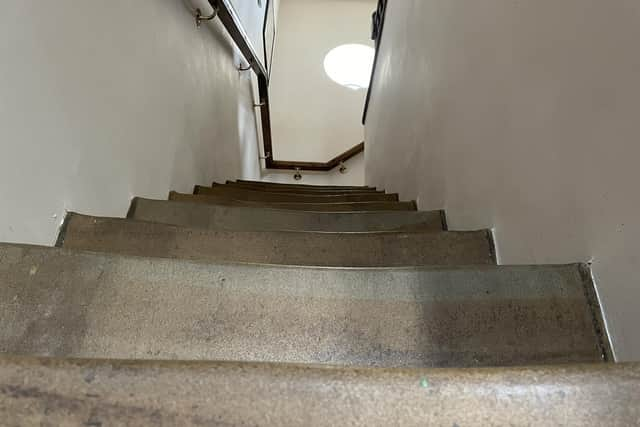Mind the step: the most dangerous thing in your home | Jack Marshall’s column
and live on Freeview channel 276
After car accidents, the most lethal cause of accidental death is stair-falls. Statistically, the stairs are one of the most hazardous terrains you will ever negotiate; each escalation and descent as brave a domestic undertaking one can embrace given that, every year, around 300,000 Brits injure themselves severely enough in stair-falls to warrant medical attention.
From that weird feeling in the middle of the night where you plant a foot expecting another step only to find the landing, to storey-traversing trips into terrifying fresh air, everyone falls. You typically miss a step once in every 2,222 stairs, suffer a minor accident every 63,000 stairs, a painful one every 734,000 stairs, and a hospital-worthy one every 3,600,000 stairs.
Advertisement
Hide AdAdvertisement
Hide AdCuriously, stats also show that unmarried people fall more frequently than married people, while previously-wed bachelors fall most frequently of all. Households with kids in them feature more falls because of increased stair-usage and because of all the stuff like roller skates, piles of washing, and half-full mugs which accumulate perilously on the staircase.


Fit and lithe stair-users also tend to fall far more often than their more rotund counterparts owing to the fact that the energetic engage in a great deal more stair-based bounding, leaping up flights and careening down them with gay abandon while the portly and sickly lean more towards a leisurely approach and work in more rest stops along the journey.
A good risk indicator is previous falls: 40% of people injured in stair falls have been injured before. And that’s because factors like lighting, bannisters, confusing tread patterns, and anything else that interrupts the rhythm of the stair-user have a huge bearing on your tumble likelihood, so if you’ve fallen in tricky conditions before, you’ll unfortunately likely do it again.
Give your stairs the respect they deserve. All it takes is one wrong step.